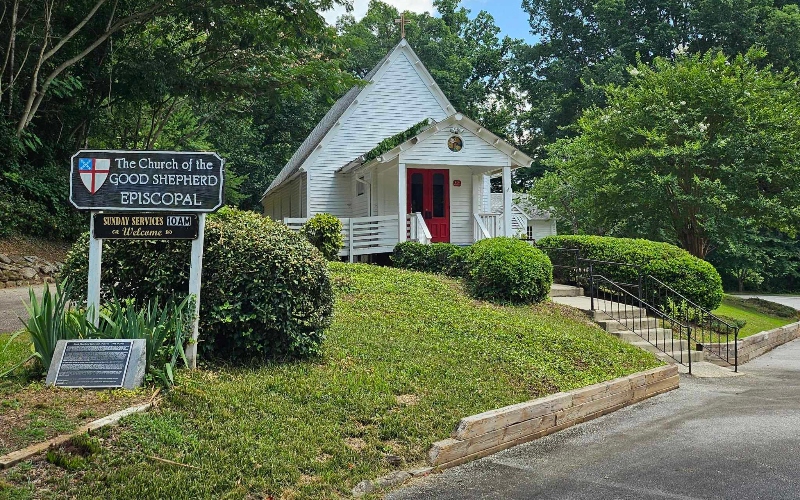Two WWI casualties occurred in the Dark Corner
Published 10:00 pm Tuesday, August 26, 2014
Far removed from the war zones of Europe, two World War I casualties—one military and one day-old baby civilian—resulted from the removal of folks from Dark Corner’s Glassy Mountain area so that Camp Wadsworth’s 27th Infantry Division, with its 102nd Trench Mortar Battery and the 104th, 105th and 106th Field Artillery Regiments, could lease 30,000 acres for a major artillery and rifle training range.
Spartanburg County was too densely populated to have live artillery training, but the mountainous area of northeastern Greenville County was ideal for providing vast acreage and a very diversified terrain, including small villages, woodland, cotton fields and farms, in addition to rugged mountain and valley sections. Also, the 25-plus-mile hike from Wadsworth to the firing range would provide excellent physical conditioning for both infantry and artillery regiments.
Under the urging of the Spartanburg Chamber of Commerce, which had lobbied long and hard to obtain one of the newly established tent camps across the Southeast, one of the assistant chiefs of staff of the division, Capt. Cornelius W. Wickersham, was given the herculean task of securing leases on the property from the mountain residents.
They seldom dealt with strangers, but his tireless energy, legal skill, tact and personality proved pleasing to the mountain folk, who were reminded that this was a way to help the war effort. The vast, blanket lease was accomplished in a short time, and preliminary survey and construction of the range began in late September, 1917, and infantry and artillery units moved into the mountains beginning in mid November.
One man refused to leave his home, however; Morris Plumley, my maternal grandfather. “There won’t be nothing (sic) here, when my family comes back,” he said. So he stood his ground on the homestead at the intersection of Dill Road and State Highway 11. (He proved to be right in some instances after the war, when folks were allowed to return. Many found homes damaged or destroyed, with no compensation from the Army or Spartanburg County.)
On March 17, 1918, he had reason to regret the decision to stay, however. His wife, Ollie, gave birth to their eighth child, a handsome, but very agitated baby boy they named James Hendrix Plumley. Dr. Morrow, from down off State Highway 14, was sent for. After a thorough examination of the baby’s agitation, he offered a sobering diagnosis: shell shock, from the loud noises of artillery batteries that had encompassed his time in the womb. The handsome baby died before midnight and was buried the following day at Ebenezer Welcome Baptist Church cemetery.
The light and heavy artillery units had a practically unlimited supply of ammunition. They were fired almost constantly under all kinds of weather conditions and terrains. Field artillery carried 100 rounds of service ammunition per gun; machine gun companies were provided 1,000 rounds per gun. Infantry troops were provided 100 rounds of service ammunition per man, with additional ammunition in combat wagons.
During the exercises, troops advanced as they would under actual battle conditions. Without using service ammunition, it is impossible to approximate battle conditions during training. Without live ammunition, the element of danger is lacking.
The noise of the firing is so loud that it injects into the exercise one of the greatest obstacles to command and communication. Practical field firing exercises are the best way to show and solidify the proper relation between field artillery and infantry to both junior officers and enlisted men.
While hundreds of thousands of rounds of ammunition were fired during the practical and realistic battle exercises, no accident occurred to tarnish their conduct at the Glassy Mountain range.
On April 12, 1918, however, one incident occurred after one of the battle exercises and took the life of a soldier. A cartridge, which had been overlooked, remained in a machine gun. It exploded and caused the death of Corporal John Kowalski, Company A, 104th Machine Gun Battalion.
The rather radical training conducted at Glassy Mountain was considered the most advanced infantry/artillery maneuver held in the United States up to that time. As a result, the 27th Infantry Division was very effective in its first attack in Belgium when they went forward behind a supporting barrage.
No artillery instruction was held at the range after the end of April, 1918, but the Dark Corner had claimed two WWI casualties. The property was released back to the original owners in early 1919.
– Dean Campbell





